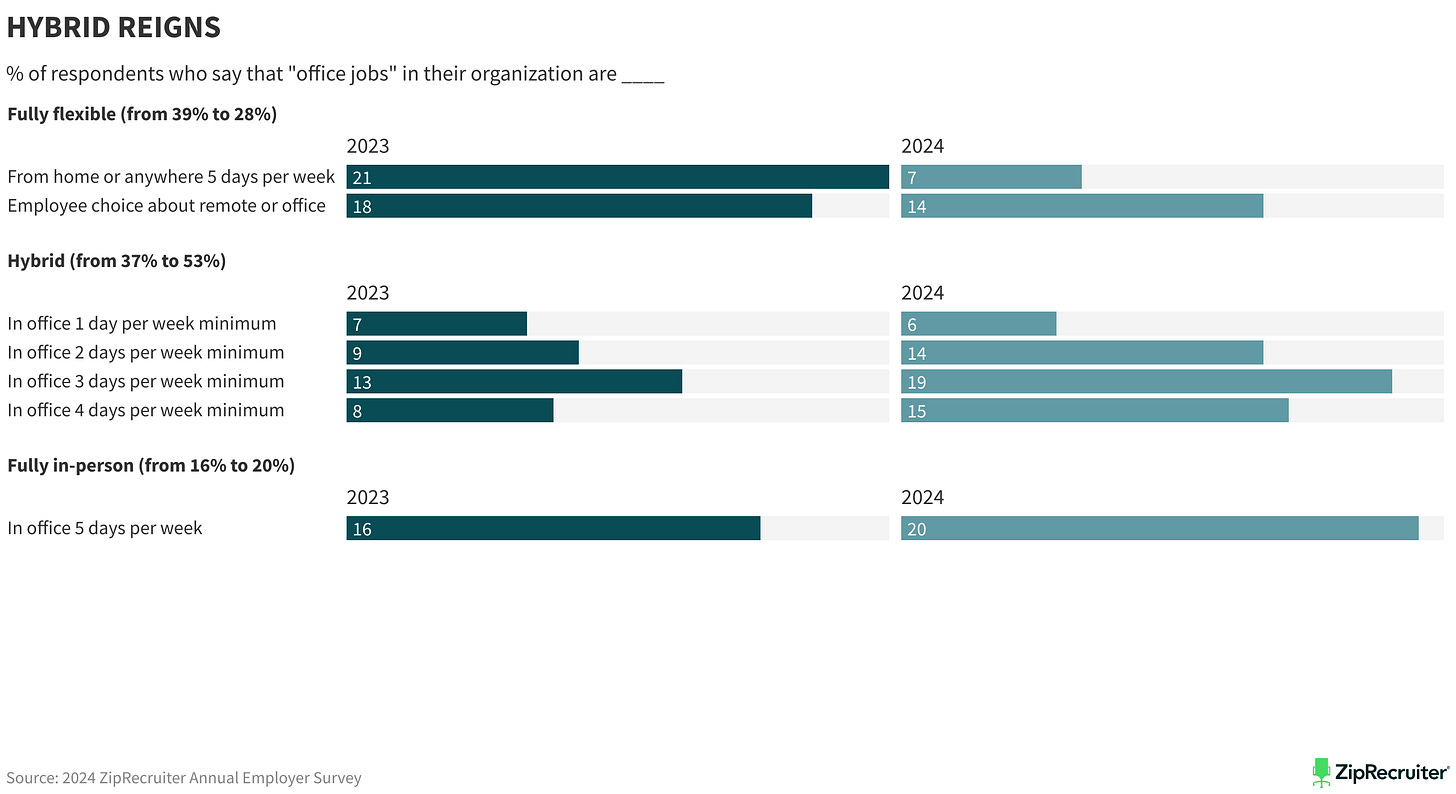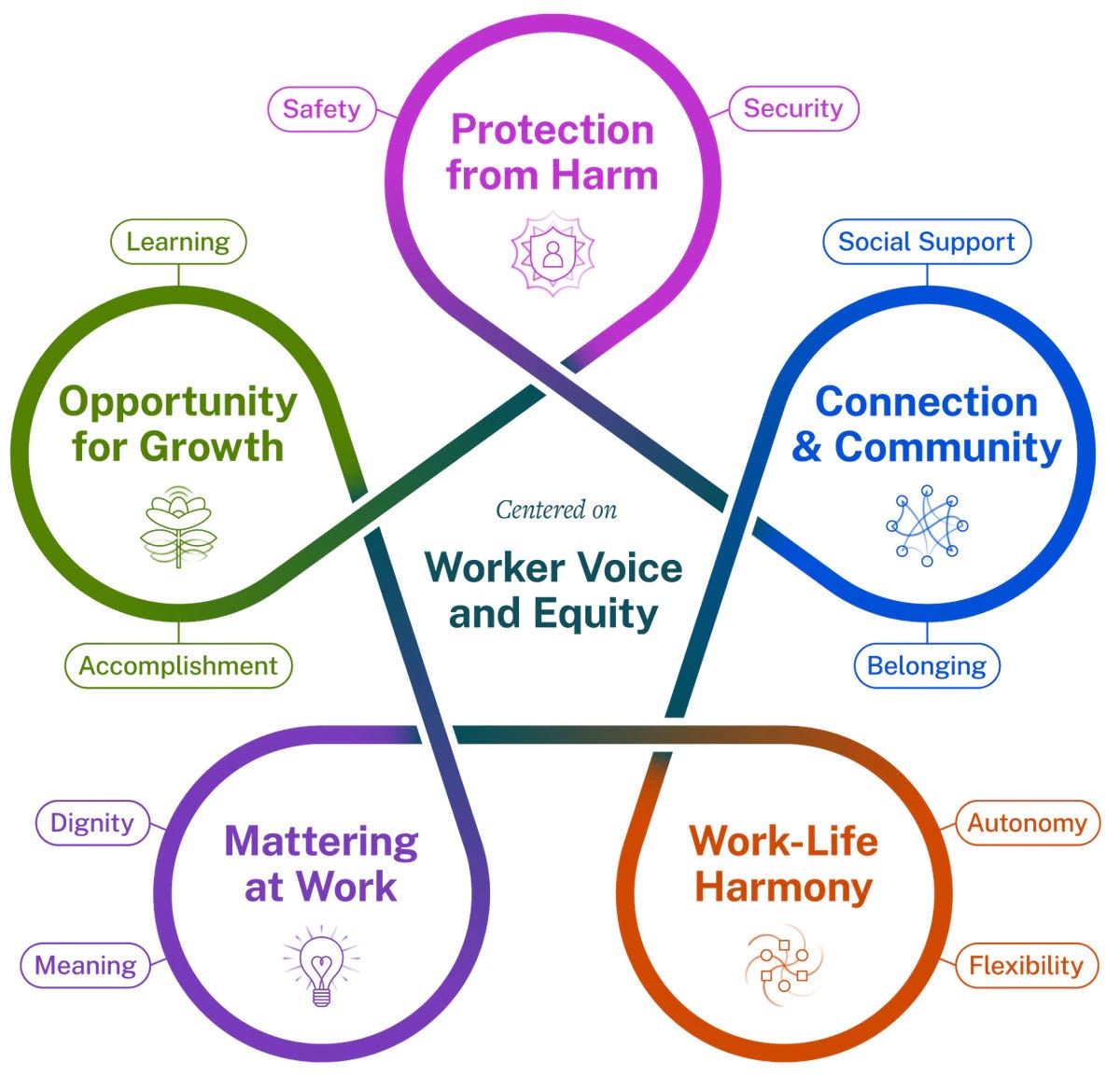Nearly five years post-COVID, the debate over return-to-office (RTO) policies remains ongoing, with productivity often cited as the primary reason for pushing employees back into the office.
But what if we examined the true cost of RTO, not just in terms of commuting or productivity, but in terms of something much more crucial—our health.
Before the pandemic, approximately 44% of companies did not support or have policies allowing remote work, whether it was one day a week or a full five-day arrangement.
In early 2020, the shift to remote work skyrocketed from 39% to 62% (roughly 102 million workers), which topped out around 1 Billion workers, practically overnight.
Between 2022 and 2024, as the effects of COVID-19 became clearer, the trend began to taper off, with many people returning to the office full-time or in a hybrid model.
Now, almost five years later, remote, hybrid and in-office work has become a defining issues in the professional world. Some companies are once again mandating return to office, citing productivity, in-person collaboration, and company culture as key reasons. However, in this push, they seem to be overlooking one significant factor—the well-being of their employees, including their physical, mental, and relational health.
Return to Office Trends
According to a 2024 ZipRecruiter survey, the share of companies allowing full remote work dropped from 21% in 2023 to just 7% in 2024 and continues to decline in 2025.
Jay Gorsica, a former Amazon employee, faced a challenging decision when the company implemented a mandatory five-day return-to-office policy. As the primary caregiver for his wife, the inflexible requirement made it impossible for him to balance his professional responsibilities with his caregiving duties, ultimately leading him to leave his position.
"The rigid RTO policy left me with no choice but to prioritize my family's needs over my career." — Jay Gorsica
Because of the challenges of full return to office, many companies are adopting hybrid arrangement. With 40% of companies supporting a mix of remote and in-office work.
"The return to the office robbed me of precious bonding time with my kids. Proposing a hybrid schedule was essential to reconnect with my family." — John Schlindwein
Workplace Turnover and Stability
In 2023, companies reported a staggering 215% turnover rate—equivalent to replacing their entire staff more than twice. High turnover was driven by:
Inadequate compensation or benefits (43%)
Limited career growth opportunities (41%)
Poor work-life balance (40%)
Decreased employee engagement (38%)
In 2024, that number dropped to 135%, thanks to:
Enhanced job security (47%)
Better work-life balance policies (46%)
Improved benefits and compensation (42%)
Stronger onboarding and training (38%)
Formal retention programs (26%)
Stress and Mental Health at Work
Between 2022 and 2023, 59% of full-time office workers reported increased stress in comparison to Hybrid Workers (55%) and Remote workers (36%).
When asked why they feel disengaged with their work,
26% said they are feeling burnt out
22% said they don’t feel fairly compensated
17% said their mental health has decreased over the past year
Additionally, manager stress surged—55% higher than for non-managers. Over a quarter of managers worry about engagement (remote workers) and employee satisfaction (in-office).
The Power of Flexibility
FlexJobs found that 96% of workers believe remote or hybrid work benefits mental health—49% prefer hybrid, 47% prefer fully remote. And, women favored remote work more than men (58% vs. 42%).
In fact, hybrid workers experience burnout 15% less frequently than in-office counterparts.
And, remote work reduces stress by 39%, and those with long commutes—especially women—report lower happiness and health.
Additionally, a 2023 study revealed that remote workers across all industries report higher well-being, less burnout, and more satisfaction than in-office employees. Burnout symptoms are 41% for in-office workers and just 26% for remote ones.
Employees noted that if they didn’t have to commute, an average of 45 minutes, they would be more productive, healthy and well-rounded employees. Choosing to spend their extra time with their family, cooking health meals, and focusing on fitness and health.
Time Gained, Health Improved
Remote and hybrid workers use their regained commute time for health:
84% eat healthier at home
90% of hybrid workers say flexibility helps them work out more
Employees save an average of 53 minutes a day—and most use that time for exercise
Additional benefits cited by remote workers:
Practical Strategies for Well-Being
Johns Hopkins and Great Place To Work emphasized that flexible work options enhance well-being and that culture matters more than perks. Successful employees manage energy through:
Physical separation of work and personal spaces
Rituals that signal start and end of work
Intentional tech use
Calendar-blocking and time boundaries
The Surgeon General’s Framework for Workplace Mental Health and Well‑Being
The Upside and Downside
Continued Challenges of Remote Work
Remote work isn't all upside. Key drawbacks include:
Social isolation (20% say loneliness is their top challenge)
Blurred boundaries between work and home
Overworking and burnout (38% report management pressure)
Limited access to ergonomic setups and IT support
Proximity bias plays a role
The Preferred Middle Ground: Hybrid Work
Hybrid workers report the highest satisfaction:
83% say hybrid allows better prioritization of health
85% feel more productive when they work out
90% say hybrid helped them establish better routines
RTO Mandates Comes With Perks (Sometimes)
As some companies continue to implement in-office work, they are also including wellness perks to better support their employees. For example, Inuit offers a $1,300 wellness reimbursement, while other companies are creating wellness rooms with massage chairs, snacks and on-site wellness centers and nutritionists.
Read more on how employers are creating wellness programs to attract talent.
Since 2020 we have been in a world of turbulence but we have proven and shown that flexibility is more than a benefit—it’s a foundational element of modern work.
While employers are pulling back on remote options, the data is still clear: flexibility supports mental health, reduces stress, and increases satisfaction. The best path forward may be one of intentional, balanced hybrid models that put employee well-being at the center of workplace strategy.
QUICK POLL: When it comes to where you work, which matters most to you?
Sources & Additional Reading
Fully Remote Work Plummeted in 2024, 2024 (INC)
50+ Eye-Opening Remote Work Statistics for 2024, 2024 (U.S. Career Institute)
The Global Life-Work Survey 2023: Tracking Happiness, Burnout, and Job Satisfaction in the Workplace, 2023 (IE Center for Health and Well-Being)
Workers Discovering Affinity for Remote Work, 2020 (Gallup)
Annual Employer Survey, 2024 (ZipRecruiter)
State of Hybrid Work 2023, 2023 (Owl Labs)
Remote Working Statistics, 2024 (Oyster HR)
Over 95% of Workers Say That Hybrid Work Is Best for Mental Health, 2023 (Forbes)
Working Days Lost to Respiratory Illness Soar Since Pandemic, 2024 (The Times)
How COVID-19 Changed U.S. Workplaces, 2025 (Pew Research Center)
Companies Are Offering 'Recharge Days' to Workers Enraged About Return to Office, 2025 (New York Post)
‘Wi-Fi Keeps Going Down’: Donald Trump's Return-to-Office Mandate Is Going Terribly, 2024 (Wired)
2023 Work in America Survey, 2023 (American Psychological Association)
Telework During the COVID-19 Pandemic, 2021 (Bureau of Labor Statistics)
Working From Home and Mental Health: A Cross-Sectional Study, 2022 (National Library of Medicine)
The Post-Pandemic Workplace Experiment Continues, 2024 (Gallup)
COVID-19 Pandemic Continues to Reshape Work in America, 2022 (Pew Research Center)
2023 Workplace Wellness Research, 2022 (Mental Health America)
An Update on Return to Office Policies as We Enter 2025, 2024 (Forbes)
Hybrid Workers Are Healthier: 2023 Report Unveils, 2023 (Jugo.io)
The Impact of Remote Working on Mental Health: Pros and Cons, 2023 (Horton International)
Glass Half Full: A Look at Return-to-Office Trends Halfway Through 2024, 2024 (Bevi)
Workplace Well-being and the Surgeon General’s Framework, 2022 (HHS)
Remote Work Has Radically Changed the Economy — And It’s Here to Stay, 2024 (U.S. News & World Report)
Remote Work & Mental Health Statistics, 2022 (Alliance Virtual Offices)
Well-being at Work: U.S. Research Report, 2024 (Johns Hopkins Carey Business School)
Hybrid Work Statistics You Need to Know, 2024 (Zoom)
Change in Remote Work Trends After COVID in the USA, 2023 (Statista)
How Remote Work Can Impact Employees’ Mental Health, 2023 (Forbes)
State of Hybrid Work 2024: Owl Labs Report, 2024 (Owl Labs)
Former Amazon Employee Shares How RTO Policy Impacted Caregivers, 2025 (Business Insider)










